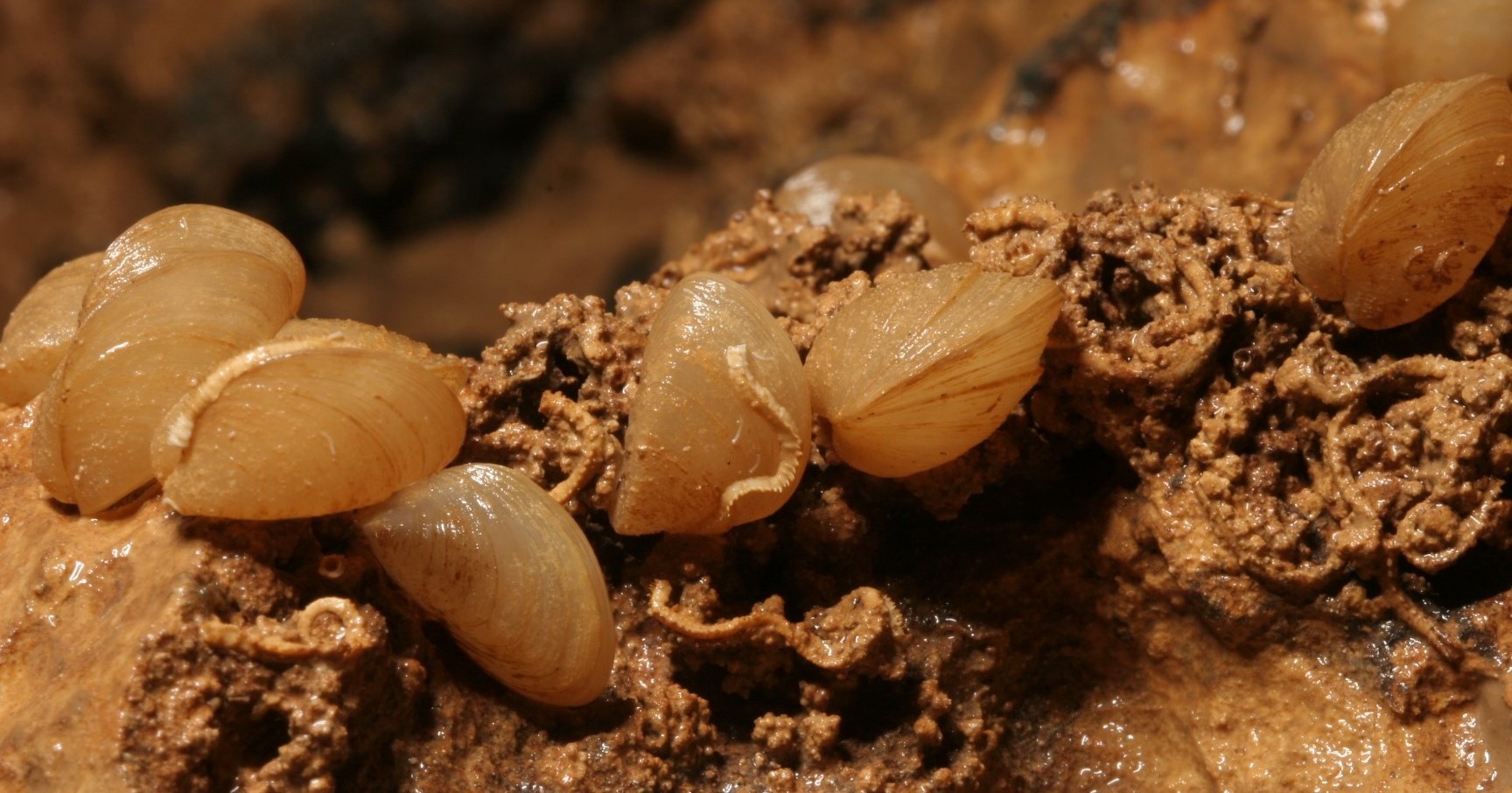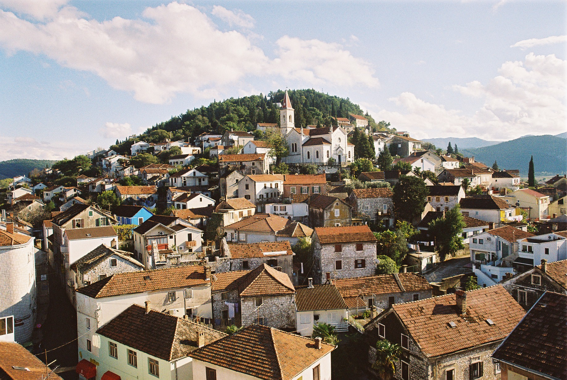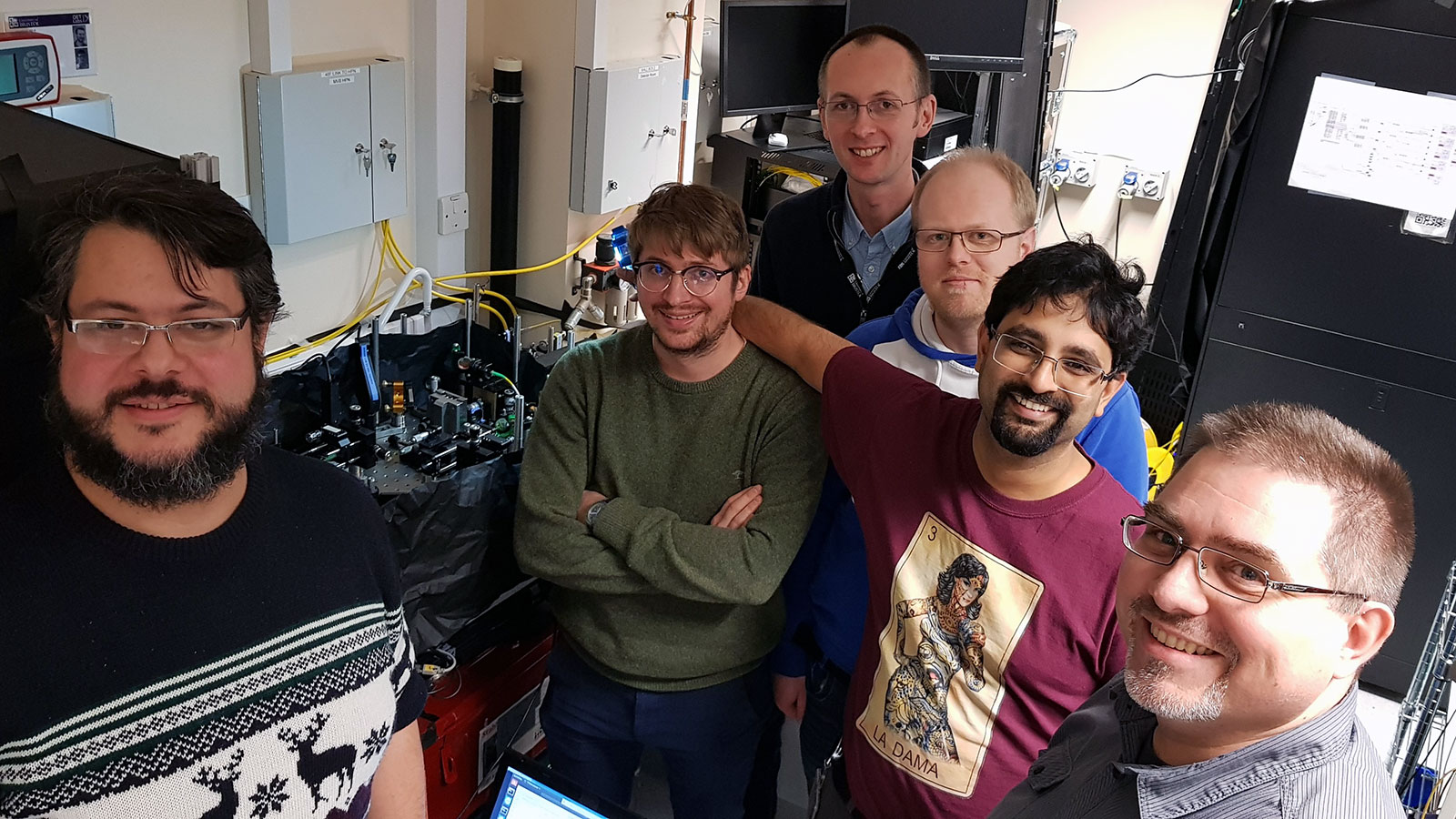Indigenous Croatian Species Congeria Kusceri Up For 'Mollusc of the Year'
January 20, 2021 – Let's be honest, Croatia has a lot more photogenic inhabitants than this. But, from over 120 molluscs registered, the indigenous Croatian species Congeria kusceri have been chosen as one of the top five finalists in this year's Mollusc of the Year competition.
There's actually quite a good reason why Congeria kusceri isn't so photogenic – it lives underground. In fact, Congeria kusceri comes from the Congeria genus, which are the only known freshwater underground shellfish in the world. Most of this genus has sadly become extinct. However, three members of the family survive in this region - Congeria jalzici which can be found in Slovenia, northern Velebit and northwestern Lika, Congeria mualomerovici which lives in the Sana basin in Bosnia, and Congeria kusceri which is endemic to underground cave systems of the Neretva and Trebišnjica basins in Herzegovina and southern Dalmatia. Although, that wasn't always the case. Congeria kusceri are albino molluscs, having lost their pigmentation while living away from sunlight. They live in southern Dalmatia, whose strongly supported football club, Hajduk Split, are also associated with the colour white © The Croatian Biospeleological Society (CBSS)
Congeria kusceri are albino molluscs, having lost their pigmentation while living away from sunlight. They live in southern Dalmatia, whose strongly supported football club, Hajduk Split, are also associated with the colour white © The Croatian Biospeleological Society (CBSS)
The ancestors of these molluscs used to live on the surface of lakes. Some of the molluscs followed the flow of water downstream and ended up inhabiting cave systems underground. Those which were able to adapt to a life of complete darkness survived. Having existed for so long in such a sunless environment, Congeria kusceri have lost their pigmentation - another reason we might consider them unphotogenic.
Congeria kusceri is on the Croatian Red List of Cave Fauna, in the category of critically endangered species, and at the European level, it is protected by the Directive on the Protection of Natural Habitats and Wild Fauna and Flora of the European Union. It is extremely rare. To date, these molluscs have been found in only fifteen underground locations of the Dinaric karst region. The Predolac hill in Metković © Jure Grm
The Predolac hill in Metković © Jure Grm
The largest living colony of Congeria kusceri that we so far know about can be found at the foot of the Predolac hill in Metković. Congeria kusceri is around two centimetres in length. Once part of a flourishing mollusc family, most of the Congeria genus died out around five million years ago. The genus was considered to be entirely extinct until shells of recently deceased individuals were found near Vrgorac in 1934. Congeria kusceri's new cousins - Congeria jalzici and Congeria mualomerovici – were only described and recognised as distinct sub-species as recently as 2013.
The Mollusc of the Year competition is run by the Senckenberg Research Institute and Museum, and the Centre for Translational and Genomic Biodiversity (TBG) in Frankfurt. Congeria Kusceri's success in being chosen as one of the finalists was announced by the Ruđer Bošković Institute in Zagreb.
Voting for Mollusc of the Year is open to the public. Anyone who is not too shellfish with their time and who may wish to support this endangered Croatian underdog in the competition can vote here
Ruđer Bošković Institute Builds 100% Spy-Free Communications System
September 3, 2020 – Scientists from the Ruđer Bošković Institute in Zagreb were integral to an international effort to realise the world's first fully functioning quantum communication network. 100% spy-free, it's the communication system of the future
Despite what some apps tell you, no online communication is completely secure. However, we have moved one step closer to that becoming a reality thanks, in part, to quantum physicists from the Ruđer Bošković Institute (RBI) in Zagreb.
Working in collaboration with scientists from the University of Bristol (UK) and the Institute of the Austrian Academy of Sciences, the international team have built the world's first fully functioning quantum communication network.
Quantum communication is a well-known field of applied quantum physics. For years, one of its most interesting applications has been regarded as its ability to protect information channels against eavesdropping. It does this by using quantum cryptography.
The security of quantum transmissions are ensured by the no-cloning theorem. This makes reproduction, or cloning, of a quantum system impossible without instant detection. If someone attempts to read the encoded data, the quantum state will be changed via the no-cloning theorem. Quantum communication is also much faster than traditional methods of communication because entangled photons can transmit information instantaneously.
The computer and communications systems of the future have been on the radar for a long time. Industry giants like Google and IBM are already investing millions in quantum computer hardware research in anticipation of our sure-fire futures.
The team of scientists from the Ruđer Bošković Institute involved in the breakthrough © Ruđer Bošković Institute
The difficulty of introducing quantum communications has been the construction of a large and easily expandable quantum-protected network. It's proven incredibly complicated to build a template for a potentially limitless number of users while also maintaining connection stability. But, that's exactly what the international team containing scientists from the Ruđer Bošković Institute have done.
The scientists from the Ruđer Bošković Institute designed and made the optical receivers for the network. This is the part of the system that will be employed by the end-user. The team of Croatian scientists from the Ruđer Bošković Institute involved in the breakthrough includes Dr Martin Lončarić, Dr Mario Stipčević and Željko Samec. The team published their world first in the prestigious scientific journal Science Advances.
Founded in 1950, the Ruđer Bošković Institute is the largest Croatian research institute working in the fields of natural sciences and technology. It operates in many different areas of scientific research, has been responsible for countless scientific discoveries and employs over 500 academics and students. It has an annual budget of over 20 million Euros and receives the majority of its funding from the Croatian state.
Ruđer Bošković Institute Boasts of High Share of Women Researchers
ZAGREB, February 17, 2019 -The Ruđer Bošković Institute (RBI) has a 58% portion of female researchers, which is why it is above the European Union and global average when it comes to the share of female researchers, the Zagreb-based Institute reported when International Day of Women and Girls in Science was observed on 11 February.
This year, the theme for that day was "Investment in Women and Girls in Science for Inclusive Green Growth".
"At present, less than 30 per cent of researchers worldwide are women. According to UNESCO data (2014 - 2016), only around 30 per cent of all female students select STEM-related fields in higher education. Globally, female students’ enrolment is particularly low in ICT (3 per cent), natural science, mathematics and statistics (5 per cent) and in engineering, manufacturing and construction (8 per cent)," according to the information available on the United Nations' website.
"Science and gender equality are both vital for the achievement of the internationally agreed development goals, including the 2030 Agenda for Sustainable Development. Over the past 15 years, the global community has made a lot of effort in inspiring and engaging women and girls in science. Yet women and girls continue to be excluded from participating fully in science"
The main Croatian science institute says that it has a total of 880 employees, and of them 427 have PhD degrees, including 246 women (58%). Also, there are a total of 11 heads of departments and four are women (36%), and when it comes to the heads of laboratories, gender equality is balanced (50% to 50%).
Of the three assistant directors of the RBI institute, two are women.
The European Union's statistical office Eurostat provided data for 2017 about gender equality in science and in that year, 59% of researchers and engineers in the EU were men and 41% were women.
In Croatia, according to the Eurostat figures, the share of women in the science and research field is 48%.
More news on the Ruđer Bošković Institute can be found in the Lifestyle section.
Major Project Completed by Ruđer Bošković Institute
ZAGREB, December 5, 2018 - The project "Using synergy to achieve excellence in the research and development of detectors, sensors and electronics" is the first successfully completed structural project in Croatia, finished in a record-short period of six months, which was marked with a ceremony inaugurating the Centre for Detectors, Sensors and Electronics at Zagreb's Ruđer Bošković Institute (IRB) on Wednesday.
The primary goal of the project was to promote, in a synergy with the project "Expanding Potential in Particle and Radiation Detectors, Sensors and Electronics in Croatia" (PaRaDeSEC), financed within the Horizon 2020 programme, the IRB's existing research infrastructure for the research, development and testing of detectors, sensors and related electronics, said IRB director David Matthew Smith.
He noted that this was the first successfully completed project in Croatia that was financed as part of the European Structural and Investment Funds in the amount of 1.5 million kuna.
Smith said the project was of great importance for the further planning of investments in science through the Operational Programme "Competitiveness and Cohesion 2014-2020".
Science and Education Minister Blaženka Divjak, who attended the inauguration ceremony, said that promoting excellence and innovation was one of her ministry's four important strategic goals in the current period. She noted that "promotion of excellence... seems easy on paper, but the required change of the system actually requires everyone involved in that system to change."
The minister said the project was a good example of how the Horizon 2020 programme, which is mostly oriented to science and excellence, can be linked with cohesion policies, which help develop countries that lag behind in any sector.
She thanked the project team, headed by Neven Šoić, for identifying that link and making it possible to complete the project in record-short time.
The project has made it possible to procure a large number of instruments important for research, as well as remodelling laboratories, thus creating controlled conditions of cleanliness, temperature and air humidity, improving the stability of electric systems and reducing the level of electronic noise, said Šoić.
For the latest science news from Croatia, click here.
“BioProspecting of the Adriatic Sea” Project Receives 37 Million Kuna from EU
The project will be implemented by the Ruđer Bošković Institute.


